Castle Gray Colors
Please read through all of the instructions in order. Some of the tips in the first sections are not repeated in the latter ones, so reading through all of the instructions will help you pick up all of the tips. The demonstration videos for each segment will help you see exactly how the paint is applied to the model.
Matching Paint Colors
|
After you print out this color chart, take it to Wal-Mart or your local craft store and use it to help you pick out matching colors of acrylic paint. If you have a larger project, you can also take this color chart to your local hardware store and have them mix you up a quart of flat house paint instead. |
Also, try to find paint colors as close as possible, but don't worry if they are not a perfect match. On the finished paint job, it's not as critical as you may think to match these colors exactly. On a similar note, all color printers will print out these swatches very closely but there may be some slight variation depending on what brand of printer you use. These slight variations will not be great enough to cause problems when picking out paint colors. |
Getting Ready To Paint
|
Castle Gray Color Scheme
| My color | RAL Classic | RAL Design System |
|---|---|---|
| Castle Gray Dark |
RAL# 7015 Slate grey | RAL# 260 40 05 |
| Castle Gray Medium |
RAL# 7046 Telegrey2 | RAL# 250 60 10 |
| Castle Gray Light |
RAL# 7047 Telegrey4 | RAL# 260 80 05 |
|
How to Mix the Paint
| 1. | To begin with, I'm using flat exterior latex house paint. I think that it holds up the best on the model. For the gray color scheme you'll want to get a quart of black and a quart of white. If you have a small simple project (such as a school project) and you don't want to spend that much money on paint, you can use acrylic craft paint instead. If you use this, you won't have to thin it with water. |
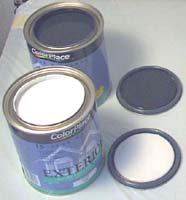 |
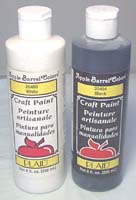 |
|---|
| 2. | Mixing the paint is easy. However, I can send you color chips of the grays shown here. When you place an order, just send me an e-mail that you want color chips and I'll send them out with your molds. You can also mail me a self addressed stamped envelope, and I'll send you back some color chips. You can take these chips to your local paint store and they can mix these colors for you exactly. |
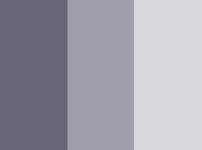 |
|---|
| 3. | The formula for the gray color scheme is:
|
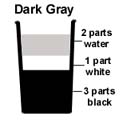 |
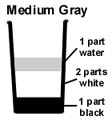 |
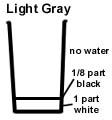 |
|---|
| 4. | I'm using 3 ounce plastic cups to dip the paint out of the can. Scrape the side of the cup off using the inside of the paint can. This will keep the paint from dripping. Pour the paint into a reusable measuring cup. To make one of these, go to my Tips & Tricks 13 page. |
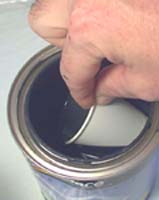 |
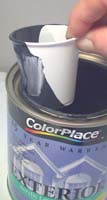 |
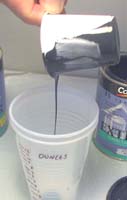 |
|---|
| 5. |
Lift the inner cup out of the measuring cup and mix the paint up. The paint will be thin because of the added water. Mix the paint thoroughly. Six ounces of paint is enough to paint a wizard's tower. |
 |
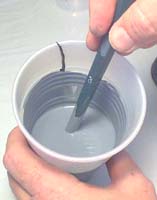 |
|---|
| 6. | To store the mixed paint, I like to use disposable plastic containers. The containers shown here are from "Ziplock", but there are several other brands also. These containers are cheap, hold a lot of paint and are much easier to open then baby food jars. |
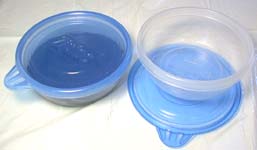 |
|---|
Painting the Dark Gray Base Coat
| 1. | Before you begin painting, dip the brush up to the hilt in water. You want to get the bristles wet all the way up. Next dab off the water with a paper towel. This will keep your paintbrush in good shape while painting. If you do not wet the brush first, paint will creep way up into the bristles and dry there, making it difficult to clean and leaving your brush not as flexible. |
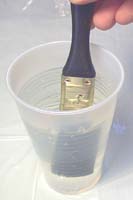 |
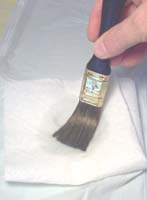 |
|---|
| 2. | Dip the brush into the paint and slop it onto the model. You want the paint to run into all of the cracks and crevices between the blocks. I suggest painting half of each piece and letting it dry. The glue I use (tacky glue) will soften up too much if you apply paint to the whole thing at once. I usually paint the bottom half first, setting the piece upside-down to dry. Also, if you paint the whole item, it's harder to hold onto without getting paint everywhere, and it will stick to the table when you set it down. |
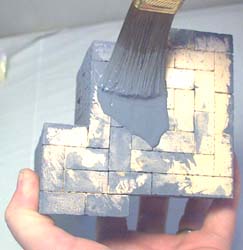 |
|---|
| 3. | To paint deep detail such as the wizard's tower faces, start by slopping the paint on. If you take a brush full of paint and scrape it across the top edge, paint will run down and cover the faces completely. Next, jab the paintbrush down into the faces and all of the cracks. The paint will be thin enough to flow into all of the gaps and spaces. |
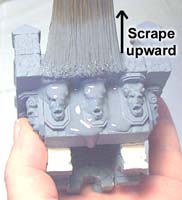 |
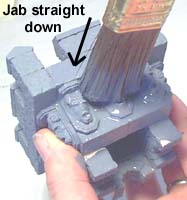 |
|---|
| 4. | Since you don't want excess paint dripping or obscuring the detail, scrape the excess paint off of the brush. Place your brush on the edge of your cup and scrape across. You'll see excess paint run down into the cup. Now jab the brush into the faces again, wipe up any drips and scrape the brush off again. Continue to do this until the excess paint is removed from the piece. |
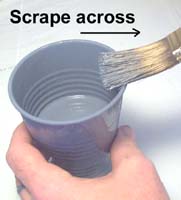 |
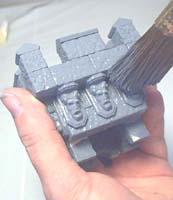 |
|---|
| 5. | Do not stack your pieces together while the paint is wet! If you do, the paint will glue your model together and you'll never get it apart again. After the paint dries, you might be thinking "Geez, this is way too dark!" But don't worry, it's supposed to be dark. |
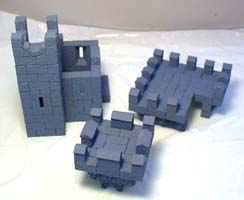 |
|---|
Painting the Medium Gray Coat
| 1. |
You'll want to tape a paper towel down to the table. Also, you'll need a good quality 3/4" wide artist's brush for putting on this second coat. How you apply the second coat really makes a difference in how your model looks, so get a good brush for this. |
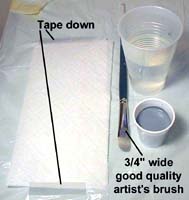 |
|---|
| 2. | Before you paint, you'll want to prepare your brush. You'll do this by dipping your brush in water. Next you'll blot the excess water out using the paper towel. This will get the bristles wet all the way up into the handle. If you don't wet the brush first, paint will get pushed way up into the bristles and dry there, ruining your brush. |
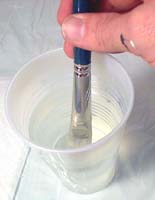 |
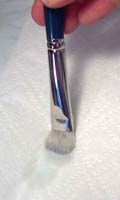 |
|---|
| 3. | When dipping your brush, only dip the bristles halfway into the paint. This will help keep paint from drying way up into the bristles. Wipe out the excess paint from the brush onto the paper towel. You want a very small amount of paint in the bristles of the brush. |
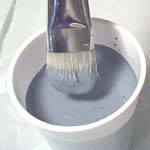 |
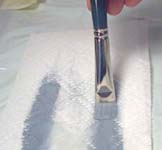 |
|---|
| 4. | Before you begin, test out your paint on the bottom of the model, or somewhere you won't see very well. This will give you a chance to see how the paint will look before you mess up a highly visible area. If you can find an area with texture, the test will work a little better. The first few strokes always have more paint in them, and it's easier to get too much on the model accidentally. |
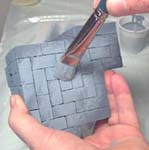 |
|---|
| 5. | How Dry Brushing WorksCompare the two photos here. Why does the second one look better than the first? The difference is dry brushing. If your second coat of paint is thick, you'll just have 2 shades of gray on your model, which will look like the first photo. The point is not to have two shades of gray, but to have lots of shades. |
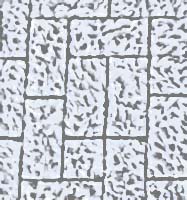 |
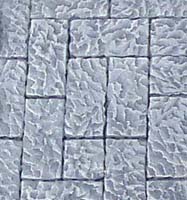 |
|---|
| 6. | The trick to getting lots of shades of gray is to do a lot of brush strokes with very little paint on the brush. When you do a single brush stroke this way, your color will end up darker because the dark color underneath will show through. The more strokes you put down, the more variety of shades will happen. |
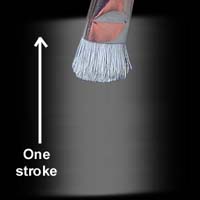 |
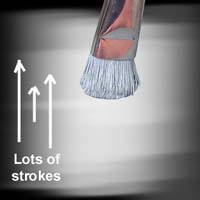 |
|---|
| 7. |
You want to pepper the surface with lots of short strokes, making sure there's very little paint on the brush. The more brush strokes you use, the more shades of gray that will appear. |
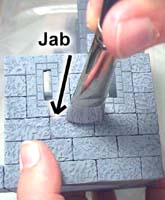 |
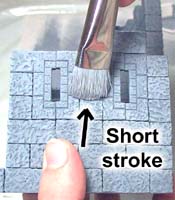 |
|---|
| 8. | You should clean your brush about once every 10 minutes. This will keep the paint from drying way up on the bristles and ruining the brush. To clean the brush, dip it in water and rotate it against the side of the cup. Wipe out the brush and repeat this several times. When finished, blot the excess water off and you'll be ready to paint again. |
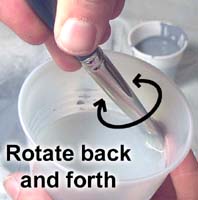 |
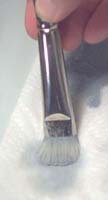 |
|---|
Painting the Final Highlight Coat
| 1. |
The final coat of paint goes on much the same way as the second coat did. However, do not wet the brush before you start. Dip the brush in the paint and then wipe the brush off almost completely. There will still be enough paint in the brush for the highlights. |
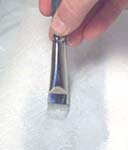 |
|---|
| 2. | This time use a very light pressure and longer strokes. This last coat will take very little paint, so if you mix more than 1 ounce, it will probably get wasted. When you need to paint over deep details like the faces, be sure that the brush is almost empty of paint, then you can jab the brush down into the faces without putting too much paint on. Finally, when you've finished this last coat, put the pieces of the tower together and compare the paint job of the separate parts. You may find that some parts may need more paint to make them match the rest of the model. |
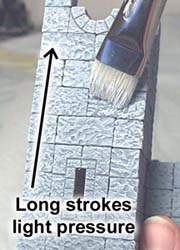 |
|---|

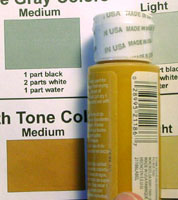 Colors printed on a piece of paper are called subtractive colors and colors shown on your phone or computer screen are called additive colors. These two color systems work differently. If you try to choose paint colors by comparing the colors on your phone screen to those of actual paint bottles, you will not get an accurate match.
Colors printed on a piece of paper are called subtractive colors and colors shown on your phone or computer screen are called additive colors. These two color systems work differently. If you try to choose paint colors by comparing the colors on your phone screen to those of actual paint bottles, you will not get an accurate match.
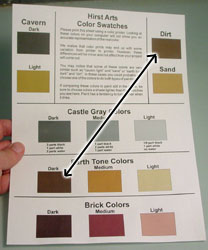 You will notice that a few of the colors on the color chart are very similar. If you compare the color swatch of dirt to the color swatch of earth tone dark you may have a hard time telling them apart. In these cases, feel free to choose one color of paint to do the job of both colors. You will probably not be able to tell the difference when you are done painting.
You will notice that a few of the colors on the color chart are very similar. If you compare the color swatch of dirt to the color swatch of earth tone dark you may have a hard time telling them apart. In these cases, feel free to choose one color of paint to do the job of both colors. You will probably not be able to tell the difference when you are done painting.
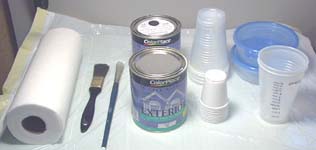 Get your materials together. You will need:
Get your materials together. You will need: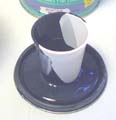 When you're finished dipping the paint out, you can set the cup onto the paint can lid if you need to use it again.
When you're finished dipping the paint out, you can set the cup onto the paint can lid if you need to use it again.
 The technique I use is a quick jabbing motion. It's a cross between a jab and a stroke.
The technique I use is a quick jabbing motion. It's a cross between a jab and a stroke.